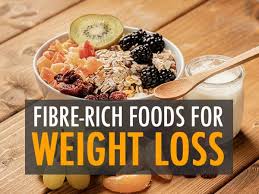
High-fiber foods are essential for weight loss and overall health. Fiber aids digestion, promotes satiety, and helps regulate blood sugar levels, making it a powerful ally in managing weight. Incorporating fiber-rich foods into your diet can help you feel full longer, reducing the temptation to overeat and aiding in maintaining a healthy calorie deficit. Here’s a comprehensive look at some of the best high-fiber foods that can support your weight loss journey.
Table of Contents
1. Legumes (Beans, Lentils, Chickpeas, Peas) fiber foods
Why They Help with Weight Loss:
Legumes are incredibly high in both soluble and insoluble fiber, making them one of the most effective foods for weight loss. A single cup of cooked lentils, for example, contains around 15 grams of fiber. The soluble fiber in legumes forms a gel-like substance in the digestive tract, slowing down digestion and increasing feelings of fullness. Additionally, legumes are rich in protein, which further enhances satiety and helps maintain muscle mass during weight loss.
How to Incorporate Them:
Legumes can be used in soups, stews, salads, and even as a base for vegetarian burgers. Incorporate them into your meals by adding chickpeas to salads, making lentil soup, or using black beans in chili.
2. Whole Grains (Oats, Quinoa, Brown Rice, Barley) fiber foods
Why They Help with Weight Loss:
Whole grains are excellent sources of fiber, especially when compared to their refined counterparts. Oats, for example, contain about 4 grams of fiber per cup when cooked. The fiber in whole grains helps regulate blood sugar levels and provides long-lasting energy, reducing the likelihood of cravings for sugary or high-calorie snacks. Whole grains also support healthy digestion, which is crucial for weight loss.
How to Incorporate Them:
Start your day with oatmeal, use quinoa or brown rice as a base for salads and bowls, or incorporate barley into soups. Whole grain breads and pastas can also be a better choice compared to refined versions.
3. Fruits (Apples, Pears, Berries, Oranges) fiber foods
Why They Help with Weight Loss:
Fruits are not only delicious but also high in fiber, especially when eaten with their skin on. A medium apple, for example, contains about 4.4 grams of fiber, and a cup of raspberries provides around 8 grams of fiber. The natural sweetness of fruits can help curb sugar cravings, while the fiber content promotes fullness. Many fruits, like apples and pears, also have a high water content, which adds volume without extra calories.
How to Incorporate Them:
Include fruits in your diet by adding them to breakfast cereals, salads, or simply enjoying them as snacks. Smoothies made with berries and other fiber-rich fruits are also a great way to increase your fiber intake.
- Vegetables (Broccoli, Brussels Sprouts, Carrots, Spinach) fiber foods
Why They Help with Weight Loss:
Vegetables are naturally low in calories and high in fiber, making them an ideal choice for weight loss. For instance, a cup of cooked broccoli contains about 5 grams of fiber. Vegetables like spinach, Brussels sprouts, and carrots are not only fiber-rich but also packed with vitamins, minerals, and antioxidants that support overall health. The fiber in vegetables helps bulk up meals, making you feel full without consuming a lot of calories.
How to Incorporate Them:
Add vegetables to every meal by including a side salad, sautéing spinach, or roasting a mix of your favorite veggies. Snacking on raw vegetables like carrots or celery with hummus can also increase your fiber intake.
- Nuts and Seeds (Chia Seeds, Flaxseeds, Almonds, Walnuts)
Why They Help with Weight Loss:
Nuts and seeds are high in both fiber and healthy fats, which can promote satiety and help control appetite. For example, just one ounce of chia seeds contains a whopping 10 grams of fiber. While nuts and seeds are calorie-dense, their fiber and fat content make them incredibly filling, so a small portion can go a long way in satisfying hunger and preventing overeating.
How to Incorporate Them:
Sprinkle chia or flaxseeds on yogurt, oatmeal, or smoothies. Use almonds or walnuts as a topping for salads or eat a handful as a snack. Nut butters, like almond or peanut butter, can also be spread on whole-grain toast for a fiber-rich breakfast or snack.
- Avocado
Why It Helps with Weight Loss:
Avocados are unique in that they are both high in fiber and healthy fats. A medium avocado provides about 10 grams of fiber, making it a superfood for weight loss. The combination of fiber and fat promotes satiety, helping to reduce overall calorie intake. The monounsaturated fats in avocados are also heart-healthy, making them an excellent addition to a balanced diet.
How to Incorporate It:
Guacamole made with avocado, tomato, and lime juice is another delicious way to enjoy this fiber-rich fruit.
- Sweet Potatoes
Why They Help with Weight Loss:
Sweet potatoes are an excellent source of dietary fiber, particularly when eaten with the skin on. The fiber in sweet potatoes helps slow down the digestion of carbohydrates, preventing spikes in blood sugar levels and keeping you full for longer. Additionally, sweet potatoes are rich in vitamins A and C, as well as antioxidants, which support overall health.
How to Incorporate Them:
Roast or bake sweet potatoes as a side dish, mash them as a healthier alternative to mashed potatoes, or slice them into wedges for baked sweet potato fries.
Conclusion
High-fiber foods are essential for anyone looking to lose weight and maintain a healthy diet. By increasing your intake of fiber-rich foods like legumes, whole grains, fruits, vegetables, nuts, seeds, and certain snacks, you can promote satiety, regulate digestion, and support overall health while achieving your weight loss goals. The key to success is incorporating a variety of these foods into your daily meals and snacks, ensuring that your diet is both nutritious and satisfying.




![[Watch] Ritika Sajdeh Showers Love For Rohit Sharma As He Punishes Naseem Shah With Six 2025 best](https://indianfastearning.com/wp-content/uploads/2025/02/image-532-150x150.png)



